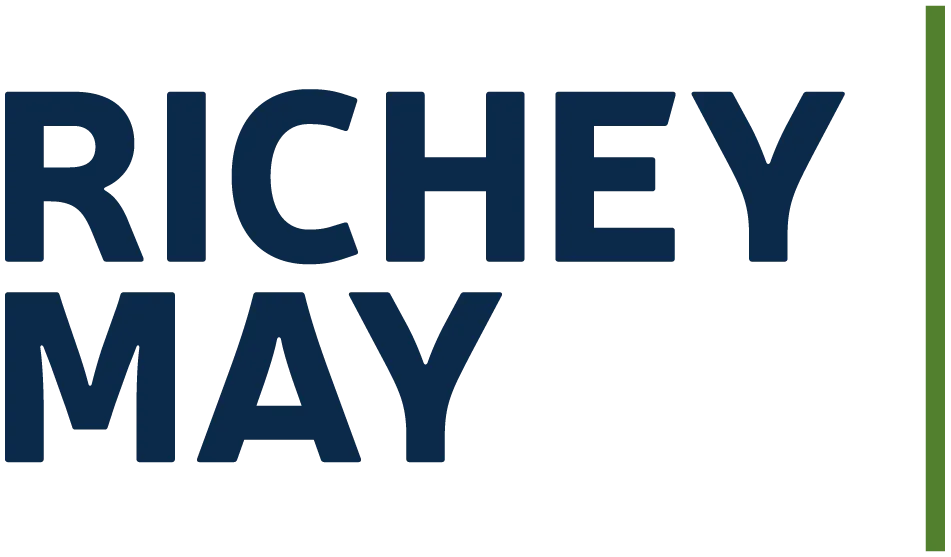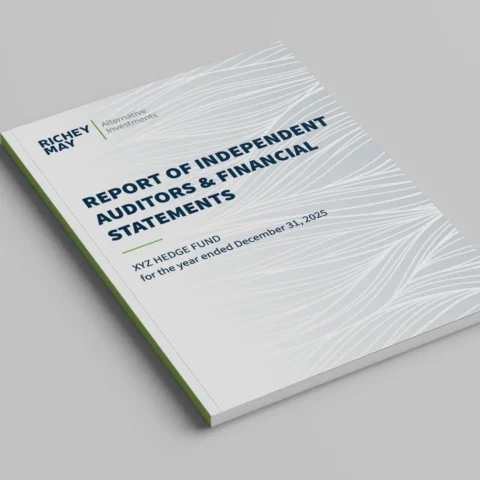Nathan Lee, Partner in Charge of Richey May Advisory, recently appeared on the Chrisman Podcast to share how important data-driven decisions are in today’s market and what the better performers do in these tight times, as they return to profitability. Read on for some excerpts from his interview with Robbie Chrisman.
This interview has been edited for length and clarity.
Robbie Chrisman: A lot has changed out there for lenders. You speak with mortgage lenders all day every day. What are you hearing?
Nathan Lee: It is a challenging time, as we all know. Lenders are under immense pressure to return to profitability by implementing any feasible strategy. However, we strongly believe that real success in this endeavor is rooted in the effective utilization of data. In everything we do at Richey May, data serves as the foundation for our services.
We focus on making sure we can put critical data in the hands of our clients. Our client-centric approach involves leveraging data across diverse areas to provide informed advice for better decision-making. Our mission is to empower our clients with data-driven insights and practical solutions; we believe that sharing our expertise with clients is key to unlocking their full potential and helping them perform at the highest possible level, even, or perhaps especially, in challenging times.
Our first objective is to enable our clients to have data in real-time, relative to their peers. By understanding how others manage cycle times, productivity metrics, margins, and other key data points, a lender can assess their own efficiency and identify areas for improvement. They can identify where they are a little bit heavy, and where perhaps they might be light; this insight is impossible without real-time data. It gives them the ability to dig in and not feel like they are flying blind or making decisions on an island, which is the case for many people out there, which is exceedingly difficult.
Just having that visibility into how the business is performing is critical so that they can understand the decisions needed to get them where they want to be and where they need to be from a profitability and performance standpoint.
When we talk about gaining greater visibility and transparency in maximizing profitability, what does that path look like?
There are certainly some things that I think separate the better performing companies that we work with and the others. I will discuss a few of those things here just to give some tangible things that companies can do right now to start on that path.
First, the better performers typically are very conscious when it comes to costs. They always try to operate lean; it is part of who they are and fundamental to their business strategy. They are not pursuing every new shiny object that appears on the mortgage shopping shelves. They are disciplined when leveraging technologies or solutions that are going to produce tangible results that fit seamlessly within the organization.
Next, these better performers also have fewer layers of management. They try to be leaner from a personnel standpoint, from an organizational structure and hierarchy standpoint. They aim to have as flat an organization as possible, with fewer layers of regional and divisional managers; that all eats into profitability, with overrides paid out to multiple people on every loan produced.
The better performers are also simply executing better. They can hold their margins and they are not giving away as many concessions. These better performers deliver their loans into the secondary market at higher prices. The combination of those two helps them capture better margins on average than their peers do. That combined with leaner expenses makes a meaningful difference in the performance of those companies.
In addition, the better performers are focused on their capital market strategy and looking at building out the list of investors that they’re working with, not only to improve execution but also just because of the concerns they have around the banking crisis and the counterparty risk that could exist and not wanting to have too many eggs in one basket. They are diversifying that risk by seeking additional investors. There are still some companies that are working on getting agency approvals to improve not only the execution but also reduce that counterparty risk that they have by relying on an investor who may or may not decide to remain in the business.
Most importantly, the companies performing better right now use data to drive decisions that are based on facts and not just assumptions or hunches.
Based on your analysis, what other things did the better performers do besides using financial metrics and benchmarking?
As I mentioned, these better performers focus on execution – with every single deal, every day, day in and day out. They collaborate with their teams to reduce concessions and control the delivery process to ensure that there are no delays that would result in late delivery charges. They work to preserve that margin through the relationships that they have with agencies, investors, and others, as well.
There is also a correlation between better performance and the retention of a larger amount of servicing. That servicing produced some valuable income over the last eighteen months. Some companies have sold servicing to generate cash and that can be important to ensure that the companies are meeting covenants. However, focusing on maintaining some servicing and trying to grow that portfolio does provide some valuable income in times like this. That could change in the future; if a recession does happen, then obviously that is going to reduce the value of that servicing, which will impact financial performance. However, that servicing will still be producing cash. There is a benefit to just having that steady stream of cash coming in.
These top performers also have an eye on productivity metrics and look at staffing levels and ask themselves: where can we outsource? Outsourcing as a practice is also a key step on the path to profitability and is a common denominator that we are seeing in the top performers right now. Processing, underwriting, internal audit, cybersecurity, sub-servicing, payroll, and other back-office fulfillment make so much sense right now and into the future. Companies are outsourcing lots of distinct functions, and it is a way to convert those fixed expenses to variable expenses so that it is going up and down as volume goes up and down rather than carrying that fixed expense even in leaner times.
It all starts with data. It is critical for mortgage companies to have visibility into how they are performing, and specifically how they are performing against their peers. Without this, it is difficult to make decisions and understand how to get the company back to profitability. Small contractual savings is not where the path to profitability begins. Get the data that is going to tell you how you are performing compared to your peers and then start making the decisions based on that data to go and adjust how you operate the business.
For more information on how Richey May can help your mortgage company navigate these challenging times, please reach out to info@richeymay.com.





